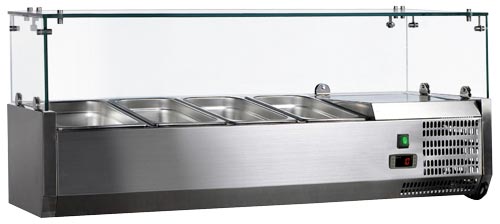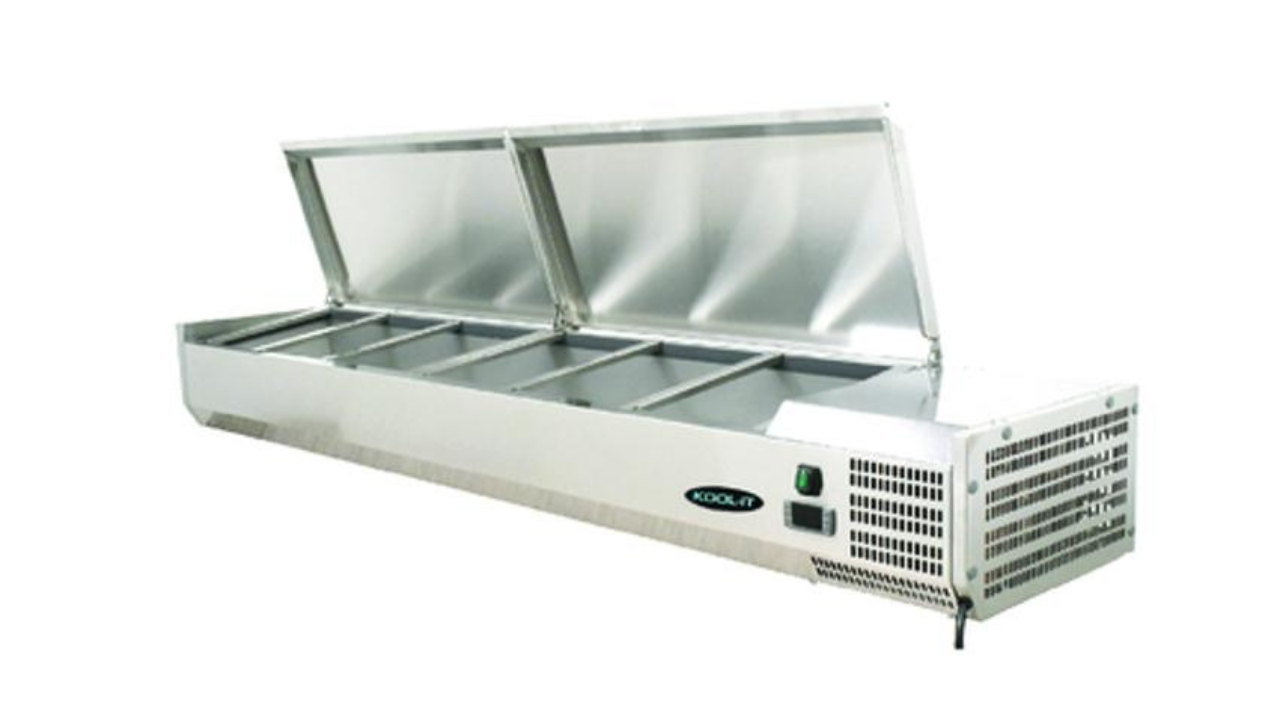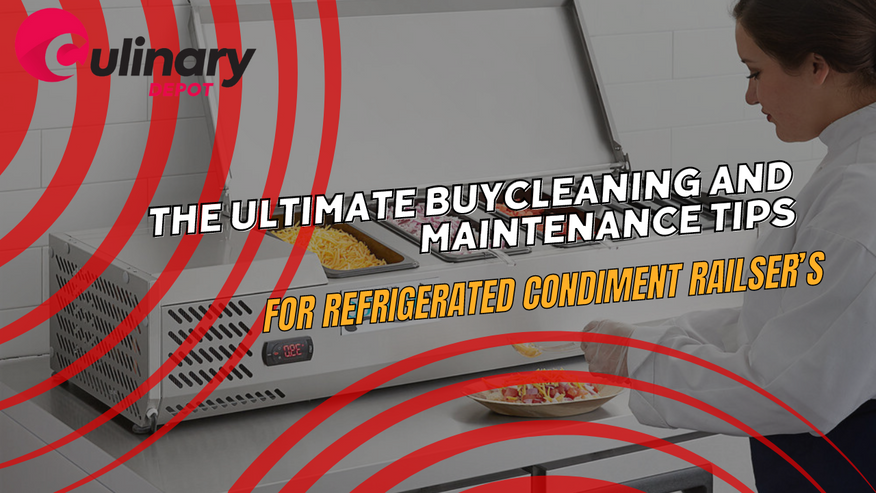Feb 12th 2024 - Team Member
Cleaning and Maintenance Tips for Refrigerated Condiment Rails
In the fast-paced world of food businesses, maintaining the highest food safety standards is paramount. Refrigerated condiment rails, essential for keeping toppings and condiments at safe temperatures, require regular cleaning and maintenance to prevent food contamination and ensure an optimal experience for customers. This detailed guide provides food businesses with an extensive overview of cleaning tasks, maintenance tips, and compliance strategies with food safety regulations, highlighting the importance of keeping equipment like ice machines, deep fryers, coffee makers, and refrigerated condiment rails in pristine condition.
The Significance of Proper Equipment Maintenance
Upholding Food Safety Standards

Regular maintenance and cleaning of food contact surfaces and equipment are crucial to avoid food safety risks, including food poisoning caused by pathogens from food contact. Health Inspectors frequently evaluate restaurants for compliance with food safety and provincial food safety laws, focusing on how well food businesses manage to keep dangerous foods and high-risk foods equipment from becoming sources of food unsafe conditions.
Omcan USA 46679
Enhancing Customer Experience
A clean restaurant, from dining room cleaning to kitchen cleaning, significantly contributes to the overall experience for customers. Ensuring that everything from pepper shakers to espresso machines is spotless not only reflects well on the establishment's commitment to quality but also helps in preventing cross-contamination and allergens from equipment affecting food safety.
Cleaning and Maintenance Tips for Refrigerated Condiment Rails
Daily Cleaning Routine

- Surface Cleaning: Wipe down stainless steel surfaces, including countertop condiment prep stations, with a soft cloth or paper towel dampened with hot water and mild detergent. Avoid using abrasive materials that can scratch or damage the surfaces.
- Interior Maintenance: Empty and clean all food pans daily to prevent the buildup of food particles that could lead to food contamination. Use a food-safe sanitizer to wipe down the interior, paying close attention to areas that come into direct contact with food.
- Drainage System: Check and clean floor drains located beneath the condiment rails to prevent clogs and odors that could detract from the clean restaurant atmosphere.
MVP Group KTR-80S
Weekly Deep Cleaning Tasks
- Cooling System: Clean refrigerator coils and fans to ensure the unit is running efficiently. This can help in reducing energy costs and extending the lifespan of the unit.
- Seals and Gaskets: Inspect and clean the seals around the doors to prevent cold air from escaping, which could compromise the safety of cold food stored within.
- Deep Cleaning Checklist: Incorporate the condiment rails into your detailed restaurant cleaning checklist, ensuring that tasks such as cleaning under and behind the unit are completed to maintain a high standard of cleanliness.
Establishing a Restaurant Cleaning Schedule
Kitchen Cleaning Checklist
Create a kitchen cleaning schedule that includes daily, weekly, and monthly tasks. Essential daily tasks should cover cleaning ovens, deep fryers, and vent hoods, while weekly tasks can focus on equipment maintenance, such as cleaning ice makers and beverage machines. A monthly deep cleaning checklist can address less frequent tasks like cleaning floor mats and refrigerator shelves.
Dining Room Cleaning Checklist
The dining area should not be overlooked, with daily tasks including wiping down tables and chairs, cleaning salt and pepper shakers, and ensuring that restroom floors are immaculate. Regular cleaning of high-touch areas like credit card machines is also vital for maintaining a hygienic environment.
Best Practices for Equipment Maintenance
Cold Food Storage
Ensure that refrigerated condiment rails and other cold storage units are operating at the correct temperatures to keep food safe. Regularly monitor temperatures and adjust settings as needed to comply with health regulations.
Ease of Cleaning
Select equipment with ease of cleaning in mind. Units with removable parts, such as food pans and shelves, offer a more thorough cleaning process, helping to maintain food safety standards and prevent food contamination.
Training Staff on Food Safety
Educate your staff on the importance of maintaining clean equipment and adhering to a restaurant kitchen cleaning checklist. Ensure everyone understands their role in preventing food safety risks and is trained in proper cleaning techniques, from using the correct cleaning products to handling high-risk foods equipment safely.
Regular Professional Servicing
For complex equipment, such as espresso machines and ice machines, consider scheduling regular professional servicing. Skilled technicians can perform detailed maintenance tasks, ensuring that your equipment remains in perfect condition and operates efficiently.
Conclusion
Maintaining clean and well-functioning refrigerated condiment rails and other kitchen equipment is essential for any food business committed to food safety and customer satisfaction. By implementing a comprehensive restaurant cleaning schedule, adhering to detailed cleaning checklists, and educating staff on the importance of food safety, businesses can ensure compliance with food safety standards and create a positive dining experience for customers. Remember, the effort put into regular maintenance and cleaning not only helps in passing health inspections with flying colors but also builds a reputation for quality and cleanliness that customers will trust and appreciate.

